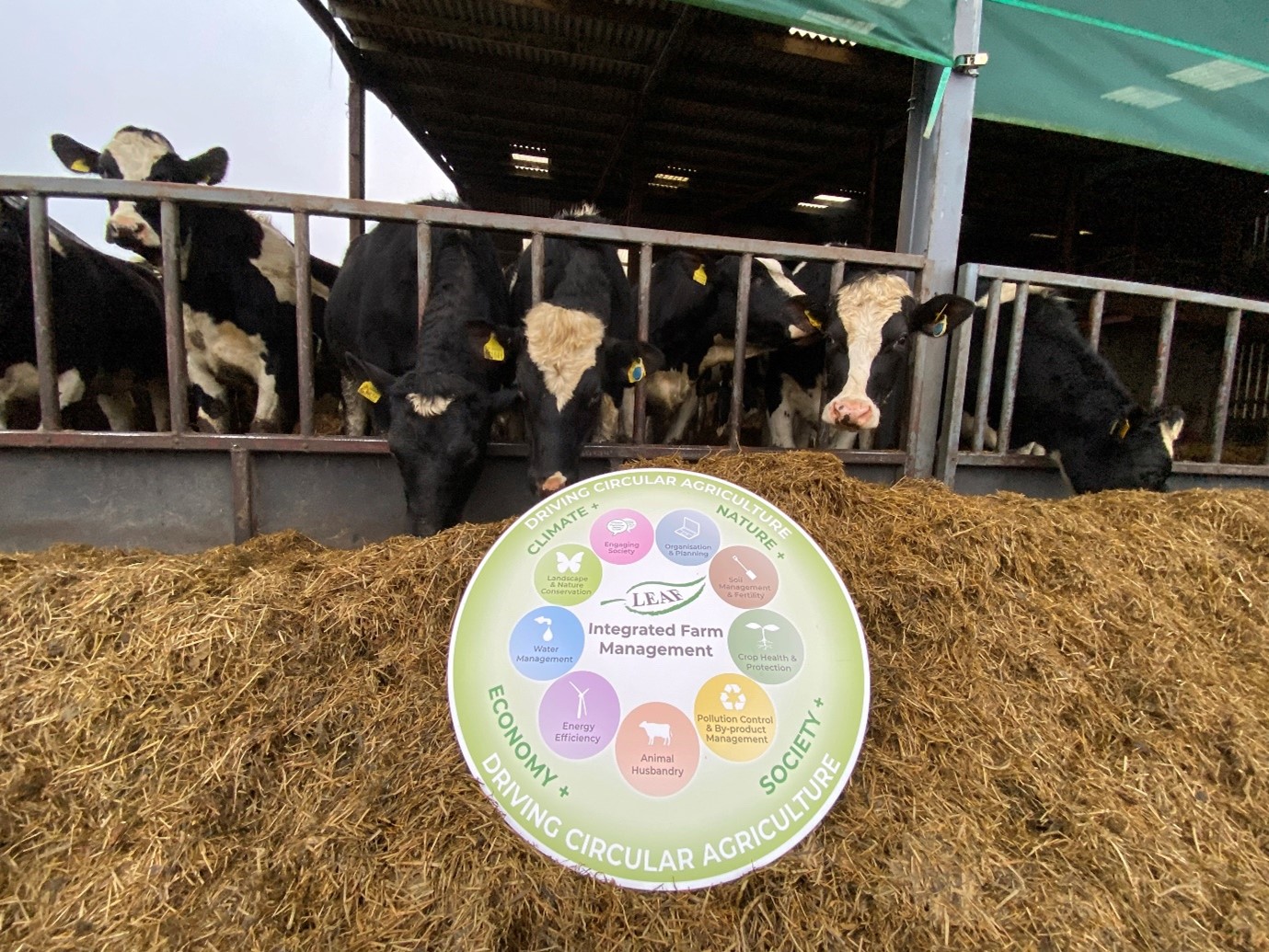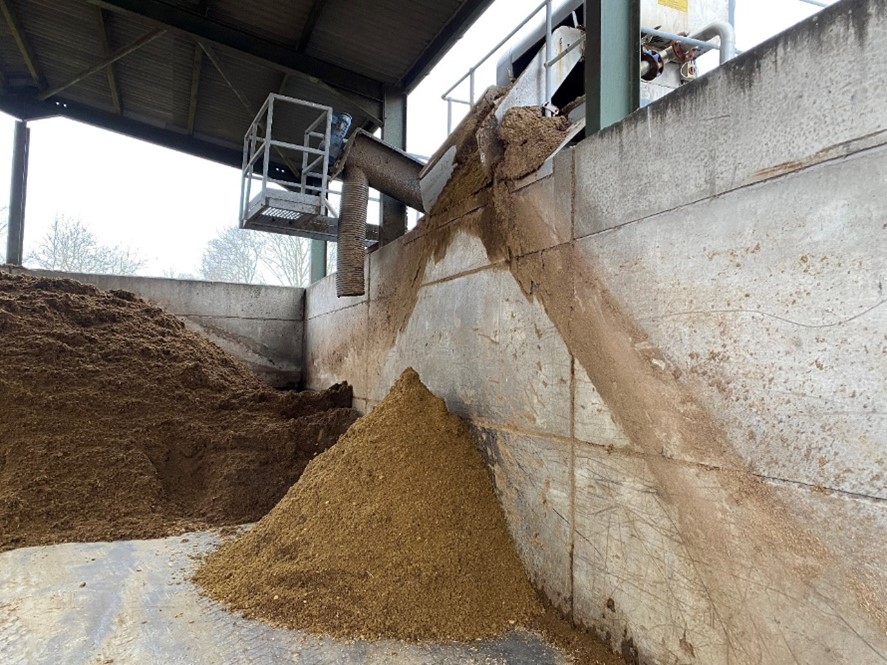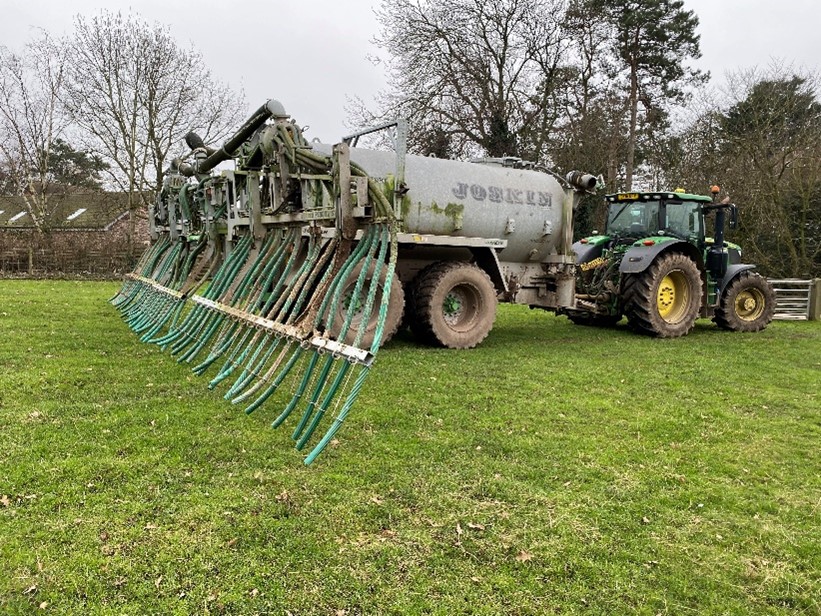 As the cost of fertilizer continues to rise, the utilisation of slurry and manure for nutrient management has become more important than ever. Viewing slurry as a resource, rather than a waste product, can aid nutrient management requirements whilst reducing input costs. In this blog we look at options for slurry storage, processing and spreading techniques that will help reduce ammonia emissions whilst improving nutrient management.
As the cost of fertilizer continues to rise, the utilisation of slurry and manure for nutrient management has become more important than ever. Viewing slurry as a resource, rather than a waste product, can aid nutrient management requirements whilst reducing input costs. In this blog we look at options for slurry storage, processing and spreading techniques that will help reduce ammonia emissions whilst improving nutrient management.
Slurry storage and processing
By 2027, it will be mandatory for all slurry and digestate stores to be covered as part of DEFRA’s Clean Air Act. The covering of slurry tanks, or the use of bag tanks, reduces the volume of rain getting into the system, therefore increasing storage capacity and slurry availability throughout the year. Covering tanks also helps to reduce ammonia emissions, conserving valuable nutrients that can instead be utilised to reduce the need for inorganic fertiliser. There are multiple options for covering slurry stores, including the use of floating plastic plates, clay aggregates or fixed covers. More information on the advantages and disadvantages of different slurry store covers can be found below in Table 1. Alternatively, the use of bag tanks can be a cheaper option than covering slurry lagoons, and ensures slurry is always covered and no rain can enter the system.
Table 1: Summary of the types, advantages and disadvantages of different slurry covers. Information from AHDB.
| Type | Description | Advantage | Disadvantage |
| Permeable Covers | |||
| Lightweight Expanded Clay Aggregate (LECA) or foam glass |
Applied in a layer 100–150 mm deep Moderate capital cost |
Easy to install on existing stores and lagoons regardless of shape. No problems reported with pumps, etc. |
Approximately 10% of the cover needs to be replaced annually These covers do not prevent rainfall from diluting the slurry |
| Floating plastic plates |
Free-floating plastic plates, generally a hexagonal (six-sided) shape Moderate cost, can be recovered and reused |
Easy to install on existing stores and lagoons regardless of shape and is effective Up to 95% reduction in gas emissions can be achieved |
These covers do not prevent rainfall from diluting the slurry |
| Impermeable Covers | |||
| Lagoons – fixed floating plastic membrane |
Large plastic sheet with integral floats and gas vents The edges of the cover are buried into the lagoon banks. Moderate to high cost |
Rainwater can be pumped off the top Stirring is possible if design allows |
Lagoon needs to be empty initially, and embankments must be suitable for fixing Access for de-sludging is difficult |
| Tanks – free-floating plastic cover |
A plastic sheet is stretched over and tensioned around a plastic hoop, which floats on the surface Low to moderate cost |
It requires no structural alteration to the store Covers can be fitted with an agitation hatch Rainwater can be pumped off the top Suitable for retrofitting |
Access for de-sludging is difficult |
| Tanks – fixed cover |
Cover coated in reinforced PVC polyester fabric These covers are usually attached to the sides of the tank with a central support pole and gas vents High cost |
Rainwater sheds from the surface naturally |
May not be suitable for retrofitting Requires store to be structurally suitable and may involve additional reinforcement |
| Integral store and cover (bag) |
Cover coated in reinforced PVC polyester fabric sat within an earth structure Restrained at sides, fitted with gas vents The cover forms part of the structural integrity of the store Moderate cost |
Smaller footprint than conventional lagoon cover Rainwater is kept separate from slurry Simpler earthworks than for lined and covered lagoons Agitation can be facilitated |
Site needs to be carefully selected Secure safety fencing is required |
 A further option for fully utilising slurry is the use of slurry separator systems, which separate slurry into a solid fraction which can be more easily stored and used as a manure, and a liquid fraction that can be spread onto crops. After separation, the solid fraction is higher in P and K and the liquid fraction is higher in nitrogen, meaning they can be better matched to crop requirements. Different types of slurry separator systems include screen, press and membrane separation systems, and a useful summary of the different types can be found here.
A further option for fully utilising slurry is the use of slurry separator systems, which separate slurry into a solid fraction which can be more easily stored and used as a manure, and a liquid fraction that can be spread onto crops. After separation, the solid fraction is higher in P and K and the liquid fraction is higher in nitrogen, meaning they can be better matched to crop requirements. Different types of slurry separator systems include screen, press and membrane separation systems, and a useful summary of the different types can be found here.
Figure 1, Right: Slurry separation system at Harper Adams University
Slurry spreading
The UK Government has set out plans to reduce ammonia emissions by 16% by 2030 compared to 2005 levels, meaning that the adoption of low emission spreading techniques will be key going forward. Northern Ireland announced a ban on splash plates this year, and through the Clean Air Act, DEFRA has committed to making low emission spreading equipment mandatory by 2025.
Low emission spreading equipment includes the use of trailing hose (or dribble bar), trailing shoe and shallow injection methods for applying slurry (Table 2). Trailing hose systems are suitable for grassland and arable crops and can reduce ammonia emissions by 30% compared to splash plates. Trailing shoe systems are suitable for grassland and arable land pre-sowing and can reduce emissions by 60% whilst minimising leaf contamination. Slurry injection systems can achieve the greatest emission reductions, by injecting liquid straight into the soil, however deep injectors should only be used prior to sowing to reduce crop damage.
Although the initial investment can be high, the use of these methods can help reduce runoff into waterways and can conserve nutrients meaning that less inorganic fertiliser is required. Grass contamination is also reduced, therefore reducing the interval between spreading and grazing and increasing the window for targeting slurry onto lower P & K soils.
Table 2: Summary of the different types of low emission spreading equipment. Information from CAFRE (2020).
| Type of Equipment | Suitability | Ammonia reductions compared to splash plates | Advantages | Disadvantages |
| Trailing hose (dribble bar) | Grassland and arable crops (where slope is less than 15%) | 30% reduction | Lightest system available, less damaging to arable crops | Lower ammonia emission reductions compared to other equipment |
| Trailing shoe | Grassland and arable land pre-sowing | 60% reduction | Delivers a higher nutrient value and lower leaf contamination | Slurry is in bands so more susceptible to runoff |
| Shallow slurry injectors | Grassland and arable land | 70% reduction | Can be used post-sowing as less damaging than deep injectors | Can be more costly than trailing shoe/hose equipment |
| Deep slurry injectors | Arable land immediately prior to sowing | 90% reduction | Conserves more nutrients | Cannot be used post-sowing due to crop damage |
 Figure 2, Right: Tanker with trailing hose system
Figure 2, Right: Tanker with trailing hose system
Future support
From Autumn 2022, you will be able to apply for grants to support investment in slurry systems through the Farming Investment Fund. This will include grants for expanding and covering slurry stores. Applications will be open to pig, dairy, and beef farmers, with the aim of providing 6 months slurry storage. Grants will cover 50% of eligible costs and will range from £25k to £250k. More information can be found on the Future Farming blog. Funding for existing slurry stores can also be applied for through Countryside Stewardship.
Additional support is available through your local Catchment Sensitive Farming Officer, who can provide specialist advice on slurry management, retaining nutrients on farm and reducing nutrient losses to water and air.
For more information about slurry and nutrient management, watch the video below which was produced by LEAF in collaboration with Catchment Sensitive Farming and Harper Adams University here https://www.youtube.com/watch?v=yCP1rAAS1Pg&t=2s



